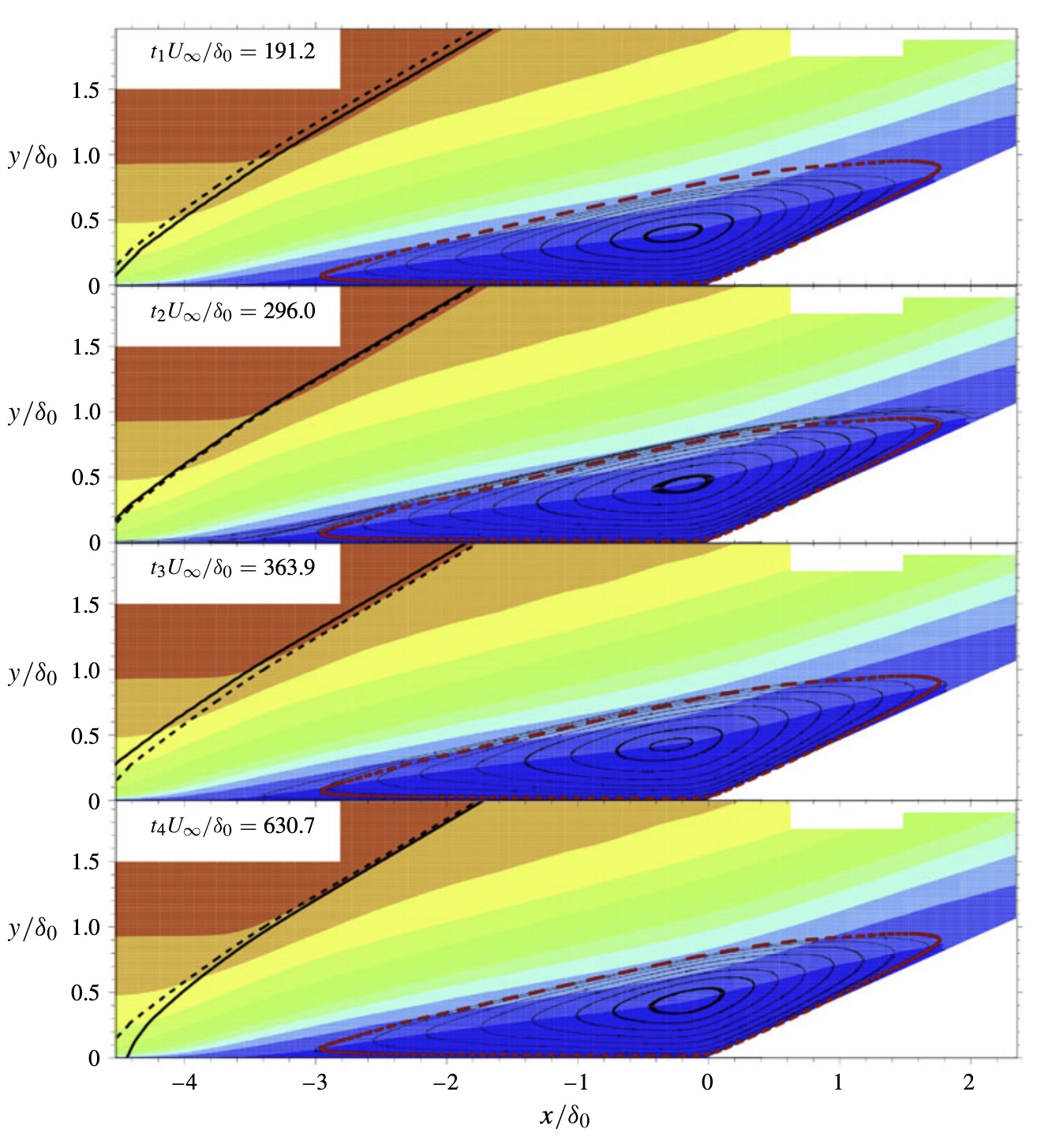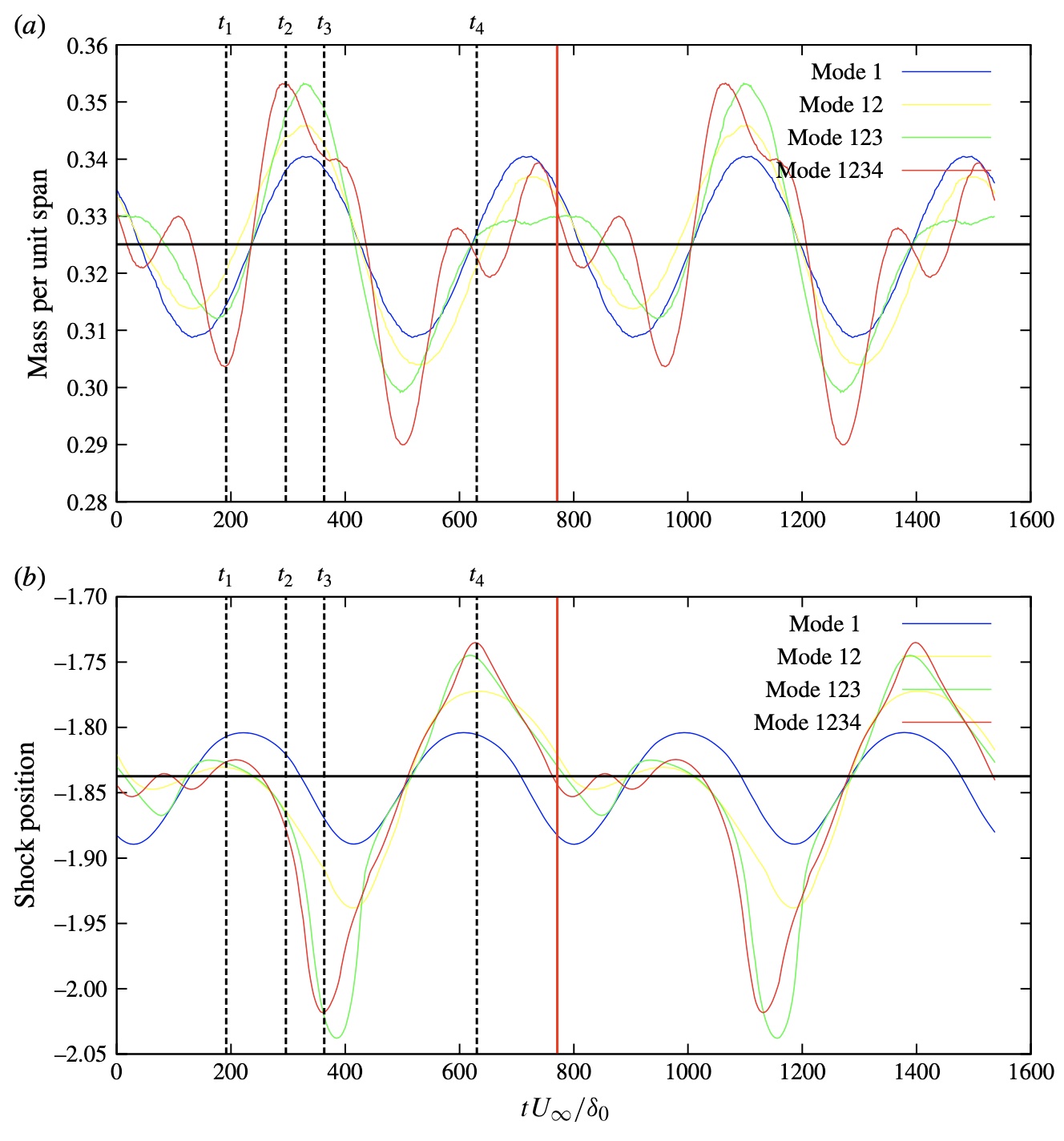M. Grilli, P.J. Schmidt, S. Hickel, N.A. Adams (2012)
Journal of Fluid Mechanics 700: 16-28. doi: 10.1017/jfm.2012.37
The unsteady behaviour in shockwave turbulent boundary layer interaction is investigated by analysing results from a large eddy simulation of a supersonic turbulent boundary layer over a compression–expansion ramp. The flow dynamics are analysed by a dynamic mode decomposition which shows the presence of a low-frequency mode associated with the pulsation of the separation bubble and accompanied by a forward–backward motion of the shock.
The interaction leads to a very-low-frequency motion near the foot of the shock, with a characteristic frequency that is three orders of magnitude lower than the typical frequency of the incoming boundary layer. Wall pressure data are analysed by means of Fourier analysis, highlighting the low-frequency phenomenon in the interaction region.


